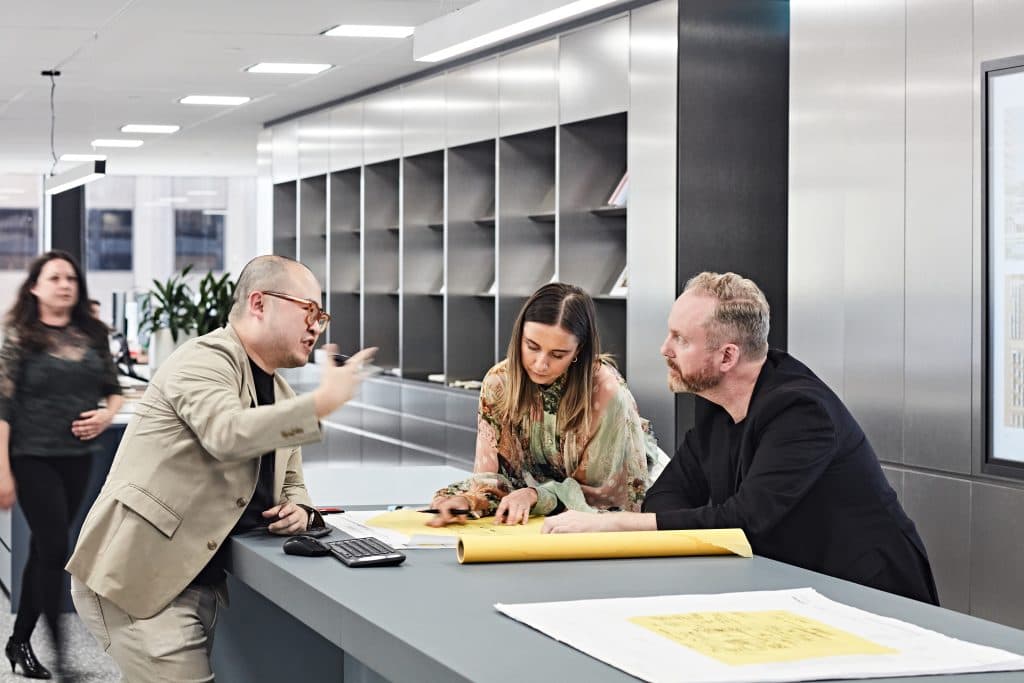The intrinsic link between design and mental health | The role we play as architects and interior designers
R U OK? Day is an important reminder to pause and consider the role we play, both personally and professionally, in supporting and prioritising mental health. Almost half of all Australian adults will face mental ill-health during their lives[1]. As designers, the way we design at all scales has a significant impact on our health, both physically and mentally.
Our impact as Designers
As Rothelowman Principal Susanne Pini explains in a previous article, “healthier communities typically have strong, deep ‘social strands’ which tie them together. These multigenerational social strands contain the ‘elements’ of daily life and mean that people not only genuinely know other people, but also share different aspects of their lives with each other.” Simply put, design has the potential to help solve social isolation. Alarmingly the risk of premature death associated with social isolation and loneliness is similar to the risk of premature death associated with well-known risk factors such as obesity. Further recent studies show that more than 33 per cent of people in Australia experience recurring loneliness. Surprisingly, the largest proportion of people who experienced the highest level of loneliness most of the time were 18 to 24 year olds.[2]
Architecture, interior design, and urban design affect how we live, which in turn affects our health. Susanne continues, “It’s critical we do not continue to build cities that are planned to dissolve the connective tissue that binds us all together by, for example, ‘trapping’ each of us in our respective silos – in the form of our cars and homes.”
The spaces and places we design have a direct link to issues such as obesity, social isolation, inclusion, inter-generational care, loneliness, mental health, societal cohesion, and diversity. Considering this intrinsic link, our mission is to think about this concept in every line that we draw in both the small and big gestures of our work. We make conscious decisions to either be a connector of people or a disconnector of people. It’s as simple as that.
Personally in her work, Susanne keeps front of mind the notion that the ‘everyday of our lives’ is more important than the ‘special days of our lives’. As a practice, we call this design principle, ‘A generous eye for life’ – Our intent is to provide buildings, spaces and detailing that foster strong engagement with future inhabitants and social value through their quality.
For example, we must design with proximity and walkability front of mind. By encouraging people to walk, we are increasing their chances of interaction with others – an integral part of maintaining both physical and mental wellbeing. This sensibility of increasing connection must operate at all scales — from city, regional and suburban to individual buildings and interiors.
Creating spaces and places that enable meaningful connection, are healthy, safe, sustainable, and contribute positively to the community and individuals is an integral part of the Rothelowman design philosophy, and our studios must be examples of this.
Our impact as an Employer
Our people and their healthy minds are our greatest asset. By fostering a culture of transparency and open dialogue, we hope to create a safe space where people feel connected to their teams and supported to reach out when they need help – no matter how trivial it may seem. At a management level, we provide training to equip our leaders to spot the signs of someone struggling and open the dialogue to have those sometimes-difficult conversations.
Our Employee Assistance Program (EAP) was introduced to provide expert support to any employee with personal concerns affecting their wellbeing. We understand it is not always easy opening up to people in the workplace, this service – conducted via a third party – protects our team’s privacy and ensures total confidentiality.
Now more than ever, we understand how critical social interaction and physical exercise are to maintain a healthy mind. We endeavour to lead by example and plan sports days, fun runs, team lunches, and book clubs to encourage people to connect and be active.
The team also has access to Social Pocket Money which offers each employee a social allowance to spend how they choose. The funds are used on activities that promote overall wellbeing. Activities range from high energy, such as boot camps and dance classes, to more relaxed past times, such as meditation, pottery classes, or anything that evokes a sense of calm and wellness.
This week, we are launching Wellness Wednesdays – a national initiative focusing on nurturing our team’s physical, mental, and spiritual health. We are excited to see this program get off the ground and evolve as we plan our activities.
R U OK? Day is a reminder that life has its ups and downs, to check in with people, be aware and supportive, and not shy away from difficult conversations. Rothelowman is imperfect and continues to strive for improvement in this space. We want to constantly evolve and listen to our people, taking on feedback as we go.
We believe design truly has the potential to help solve social isolation. As a practice and an employer, we take on the responsibility to create spaces and places for people that foster strong engagement and create social value.
[1] https://www.health.gov.au/health-topics/mental-health-and-suicide-prevention
[2] https://www.aihw.gov.au/reports/australias-welfare/social-isolation-and-loneliness-covid-pandemic


